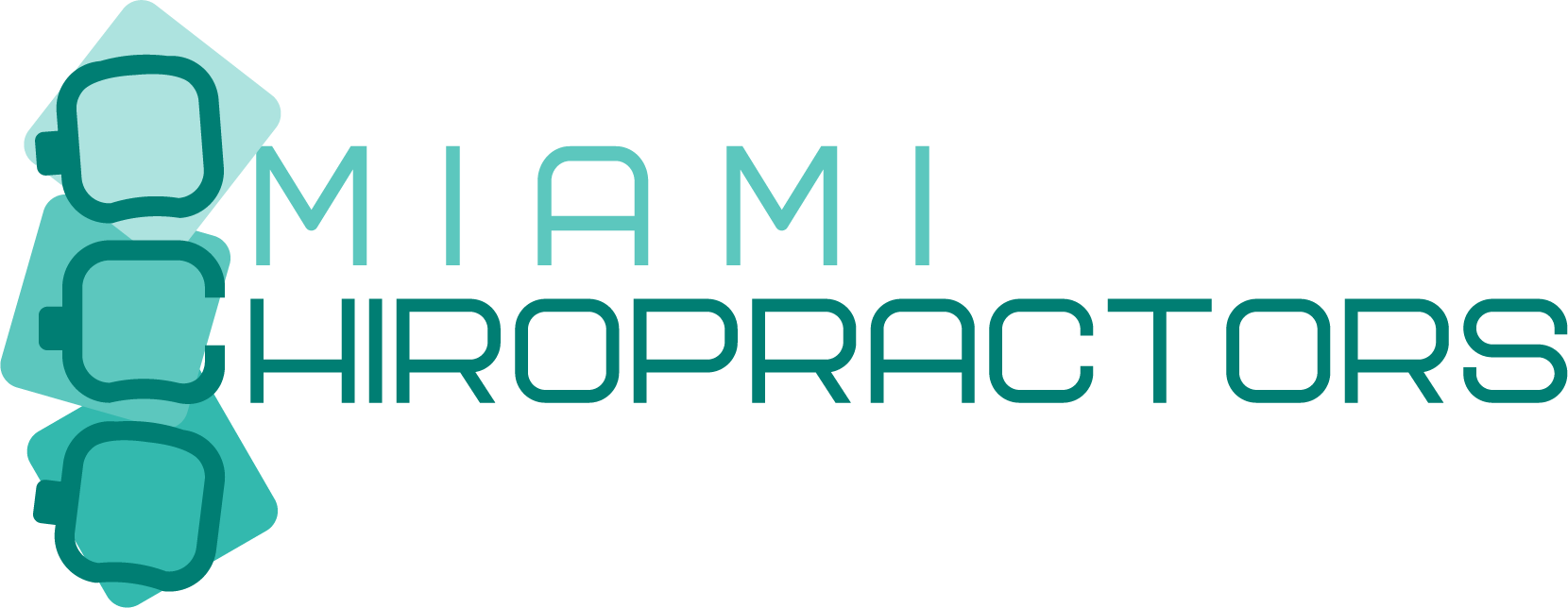
Growing Up Strong
Photo by Gabby Orcutt on Unsplash
Chiropractic Care Benefits for Children’s Health
Chiropractic care for adults is a well-known approach to maintain spinal health and prevent various aches and pains. However, many people might not be aware that children, too, can greatly benefit from chiropractic care. Pediatric chiropractic treatments play a crucial role in children’s health, ensuring their bodies develop properly while supporting their overall well-being.
From an early age, children encounter various physical challenges, such as learning to crawl, walk, and eventually participating in sports and activities. These milestones can put stress on their developing spines and musculoskeletal systems. Chiropractic care for children offers a gentle and safe approach, allowing for proper alignment and reducing the likelihood of potential problems later in life.
Moreover, benefits of pediatric chiropractic care extend beyond spinal alignment. It can also improve sleep, boost immune function, and alleviate muscle tension. Regular chiropractic check-ups can give children a strong foundation for a healthy future, making this an essential part of their wellness journey.
Overview of Chiropractic Care
History
Chiropractic care has a long history that dates back to the late 19th century in the United States. It was founded by D.D. Palmer, who developed the idea that spinal misalignments, or subluxations, could cause health problems by interfering with the nervous system. Over the years, chiropractic care has evolved and expanded, becoming a widely accepted form of healthcare in both the United States and Europe. Today, chiropractors are regulated and licensed in all 50 states, and the profession is well-established globally.
Safety and Risks
Chiropractic care is generally considered safe when performed by a licensed and experienced practitioner. However, like any medical intervention, there are potential risks, albeit rare. Some potential risks include soreness or stiffness after treatment, temporary discomfort, and in extremely rare cases, injury to the spinal cord or blood vessels. It’s important for patients and parents to discuss any concerns with their chiropractor and ensure that the provider is aware of their medical history and current health conditions before undergoing any treatment.
Chiropractic Techniques
There are various chiropractic techniques used to assess and treat patients. Some common methods include:
Spinal adjustments: These involve the chiropractor applying controlled force to specific joints in the spine to correct misalignments and improve mobility.
Soft tissue therapy: This approach focuses on addressing issues with the muscles, ligaments, and tendons surrounding the spine, which can contribute to misalignments and pain.
Activator method: This technique uses a small, handheld device called the Activator Adjusting Instrument to deliver a targeted, low-force adjustment to the spine or extremities.
Flexion-distraction: This method involves the use of a specialized table that allows the chiropractor to gently stretch and decompress the spine, often used in cases of disc injuries or spinal stenosis.
When it comes to children’s health, chiropractic care can play a crucial role in supporting healthy growth, development, and overall well-being. Regular chiropractic check-ups and adjustments can help ensure that a child’s spine and nervous system function at their best, setting the stage for optimal health throughout their lives.
[embedded content]
Chiropractic Care for Children
Chiropractic care is not just for adults; it can also play a significant role in supporting the health and well-being of children. With the growing number of children and adolescents seeking chiropractic treatments, it has become increasingly important to understand the benefits, conditions treated, and potential controversies surrounding chiropractic care for children.
Effectiveness
Chiropractic care serves as a non-invasive, drug-free approach to improving children’s health. It promotes natural healing and focuses on addressing the root cause of health issues, rather than merely treating symptoms. Chiropractic adjustments have been found to be effective in helping children with various health challenges, such as chronic ear infections and colic. Furthermore, these treatments can improve children’s focus, function, and overall development.
Conditions Treated
Chiropractic care can support the treatment of various childhood conditions, including:
Ear infections
Colic
Asthma
Bedwetting
Headaches
Growing pains
Scoliosis
Developmental delays and learning disorders
Chiropractic adjustments are tailored to each child’s individual needs and take into account their unique growth and development.
Potential Controversies
Despite its effectiveness in treating various childhood conditions, chiropractic care for children is not without its controversies. The practice has faced criticism in some regions, such as Canada, due to inconsistent practices and conflicting medical guidelines. Some critics argue that there is insufficient evidence to support the widespread use of chiropractic care in pediatric populations.
However, many chiropractors and parents who have witnessed the benefits of chiropractic care stand by its role in supporting children’s health and well-being. It is crucial for parents to consult with their pediatrician, conduct thorough research, and make well-informed decisions when deciding if chiropractic care is a suitable option for their child.
The Chiropractic Adjustment Process
Physical Exam
During a chiropractic visit, the first step is typically a physical exam. The chiropractor will assess the child’s overall health and focus on their spine, checking for misalignments or subluxations. This examination may include observation, palpation, and specific tests designed to identify areas needing attention. The goal is to diagnose the underlying issue and develop an appropriate treatment plan.
Spinal Adjustments
Once the physical exam is complete, the chiropractor will perform spinal adjustments on the child. These adjustments are gentle, controlled movements applied to particular points on the spine. The main objective is to realign the spine, improve spinal motion, and in turn, enhance the child’s overall physical function. Chiropractors are trained to tailor the treatment to the specific needs and age of the child, ensuring appropriate force applied during the adjustments.
Spinal Manipulation
Spinal manipulation is another common technique employed in chiropractic care. It involves the use of hands or a small instrument to apply a controlled, sudden force to a spinal joint. This procedure aims at restoring normal movement and function to the affected area, alleviating pain, and reducing inflammation. Like spinal adjustments, spinal manipulation is performed with care and precision, considering the child’s age and specific condition.
In conclusion, chiropractic care for children involves a thorough physical exam, gentle spinal adjustments, and spinal manipulation when necessary. These techniques address spinal alignment issues and can improve a child’s overall health and well-being, while also maintaining a safe and comfortable experience for the young patient.
Role of Chiropractic Care in Prevention
Injury Prevention
Chiropractic care plays a significant role in injury prevention, particularly among children and adolescents experiencing growth and developmental changes. As children become more physically active, the risk of injuries such as sprains, strains, and falls increases. Chiropractic care can help by identifying early musculoskeletal imbalances and biomechanical discrepancies, addressing these issues through appropriate interventions like spinal adjustments or specific exercises.
Chiropractic care also helps in improving neuromuscular coordination, flexibility, and joint mobility in children, which in turn can lower the risk of injuries. By promoting proper alignment and posture, chiropractors ensure that the child’s musculoskeletal system functions efficiently, leading to better overall health and a lower likelihood of injury due to falls or other accidents.
Preventive Care
Chiropractic preventive care focuses on maintaining the child’s overall health and well-being by addressing potential issues before they become significant problems. This approach to health care is particularly relevant for children as it emphasizes proactive measures that encourage a lifetime of healthy habits.
Some examples of preventive care provided by chiropractors include:
Routine Assessments: Regular chiropractic check-ups can identify minor issues in the musculoskeletal system, enabling early intervention to prevent future complications.
Posture Education: Teaching children about proper posture, both while sitting and standing, can help prevent long-term spine, joint, and muscle problems.
Recommendations for Daily Activities: Chiropractors can suggest age-appropriate activities that encourage physical fitness and mobility while minimizing strain on vulnerable areas like the spine.
Nutrition and Lifestyle Advice: Chiropractic care is not limited to physical adjustments; chiropractors can also provide guidance on nutrition and healthy living choices that contribute to overall wellness.
In conclusion, chiropractic care is an essential component of comprehensive health care for children, with a focus on injury prevention and preventive care. By addressing potential concerns early, chiropractors can support children’s overall health and help them develop habits that promote lifelong well-being.
Photo by Chris Benson on Unsplash
Society’s Perception of Pediatric Chiropractic Care
Pediatric chiropractic care has gained increasing recognition over the years. With professional organizations such as the American Chiropractic Association and the International Chiropractic Pediatric Association, the credibility and awareness of this field continue to grow. In this section, we will explore the roles played by these organizations and discuss the patterns of patient visits and referrals in pediatric chiropractic care.
American Chiropractic Association
The American Chiropractic Association (ACA) advocates for chiropractic care by promoting proper patient care, maintaining high professional standards, and collaborating with other healthcare providers. They emphasize the importance of integrating chiropractic care into overall health and wellness plans. The ACA supports and recognizes chiropractic care for children as a potential means of addressing various health concerns and promoting optimal growth. The association provides guidelines and resources for chiropractors with a special interest in pediatric care, thus contributing to the professionalization and standardization of practices in the field.
International Chiropractic Pediatric Association
The International Chiropractic Pediatric Association (ICPA) is another organization dedicated to advancing chiropractic care for children. Their mission is to provide evidence-based education, training, and research in pediatric chiropractic care. The ICPA has established certification programs and conducts seminars to ensure that chiropractors are well-equipped to treat children. By offering these educational resources, the ICPA plays a significant role in fostering credibility and promoting high-quality care in pediatric chiropractic.
Patient Visits and Referral Patterns
Understanding the patterns of pediatric patient visits and referrals is essential in assessing the public’s perception of chiropractic care for children. A cross-sectional survey revealed that 76% of chiropractors had treated pediatric patients within the last year, and 80% had referred patients to medical practitioners. This finding demonstrates that the chiropractic care of children has become a significant aspect of chiropractic practice, and professionals in this field are actively collaborating with other healthcare providers to improve patient outcomes.
In conclusion, the presence of the American Chiropractic Association and the International Chiropractic Pediatric Association, as well as growing numbers of pediatric patient visits and referrals, showcase the increasing acknowledgement and confidence in the role of chiropractic care in children’s health. With ongoing collaboration, research, and education, the public’s perception and understanding of pediatric chiropractic care are likely to continue evolving positively.
Alternative Therapies and Chiropractic Care
Herbal Remedies
Herbal remedies and nutritional supplements are often used as complementary therapies to chiropractic care for maintaining children’s health. These remedies consist of herbs and dietary supplements that are deemed safe and effective when used appropriately. The use of herbs and supplements can support a child’s overall health and well-being by providing essential nutrients and promoting optimal function of various body systems. However, it is essential for parents to consult with a healthcare professional before introducing any herbal remedies or supplements into their child’s routine.
Complementary and Alternative Medicine
Complementary and alternative medicine (CAM) therapies for children include a wide range of practices that are not typically considered part of traditional medical care. CAM therapies, such as acupuncture, massage, and chiropractic care, can be beneficial for children in conjunction with conventional medicine. Chiropractic care is one of the most frequently utilized CAM therapies, as it focuses on the diagnosis and treatment of musculoskeletal disorders, which are common among children.
In pediatric chiropractic care, practitioners use gentle spinal adjustments and other manual therapies to improve the alignment and mobility of the spine and joints, promoting a healthier nervous system and overall well-being. This approach can be particularly beneficial for conditions like scoliosis, sports injuries, and other musculoskeletal complaints in children.
The efficacy of chiropractic care in children has been supported by various studies, demonstrating its potential to relieve pain, improve mobility, and enhance the overall quality of life. Parents considering chiropractic care for their children should seek out qualified practitioners with experience in pediatric care to ensure the best possible results.
By incorporating herbal remedies, nutritional supplements, and other CAM therapies alongside chiropractic care, parents and healthcare professionals can create a holistic approach to children’s health and well-being. This comprehensive strategy helps address not only physical symptoms but also emotional and mental aspects of health, fostering a balanced and healthy lifestyle for children as they grow and develop.
Conclusion
Chiropractic care can play a significant role in children’s health and development. By focusing on the alignment of the spine and nervous system, pediatric chiropractic care ensures the body’s communication pathways are free from interference. This can lead to a variety of benefits, such as improved immune function, better sleep, enhanced digestion, and overall wellness.
In recent years, chiropractic care has gained traction as a popular complementary and alternative medicine treatment for children and adolescents. Although the practice of pediatric chiropractic still faces some controversy, research continues to support its effectiveness in managing a range of conditions, including musculoskeletal disorders, prevention, headaches, otitis media, and other health issues.
Chiropractors strive to integrate their services with other healthcare providers to offer the most appropriate care for their pediatric patients. This collaborative approach not only benefits the patients but also fosters a better understanding of chiropractic care among other healthcare professionals.
Incorporating chiropractic care into a child’s healthcare routine can help them grow up stronger and healthier. The benefits of pediatric chiropractic care, along with the increased acceptance of chiropractic as a valid healthcare option for children, make it a valuable addition to the spectrum of healthcare services available to support children’s health and development.

